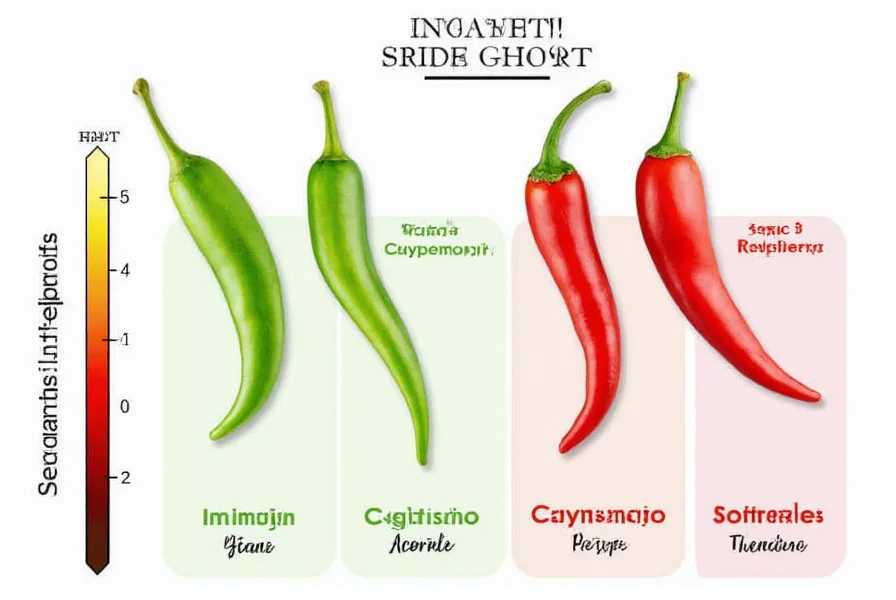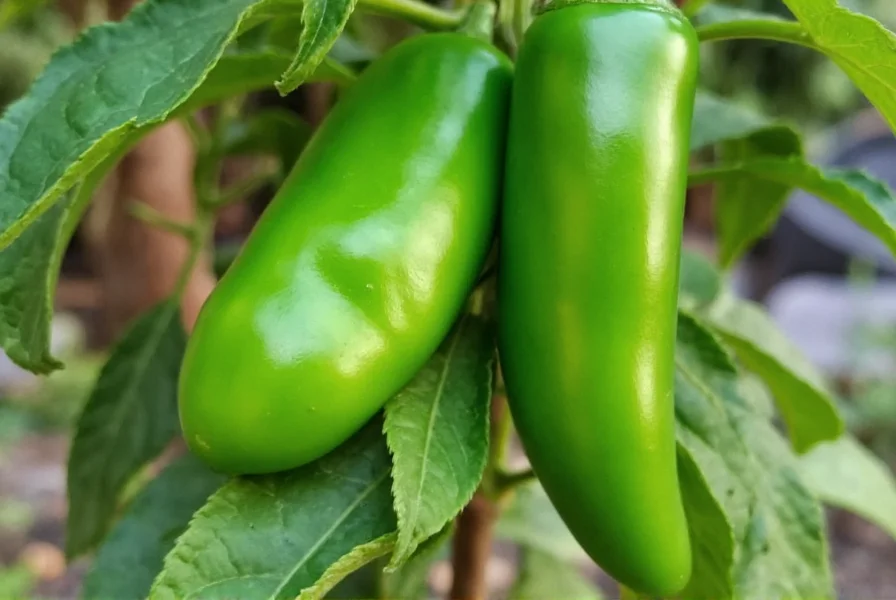The Scoville scale, developed by Wilbur Scoville in 1912, measures chili pepper heat intensity by determining capsaicin concentration. Serrano peppers (Capsicum annuum) consistently register between 10,000-23,000 SHU, though actual heat can vary based on growing conditions, maturity, and specific variety. Understanding this measurement helps home cooks and professional chefs select appropriate peppers for recipes requiring specific heat levels without overwhelming other flavors.
Native to the mountainous regions of Mexico's Puebla and Hidalgo states, serrano peppers have been cultivated for centuries. Their name derives from "sierra," Spanish for mountain, reflecting their high-altitude origins. Unlike many chilies that change color dramatically as they ripen, serranos typically transition from bright green to red, orange, or yellow while maintaining their characteristic slender, 2-4 inch shape with smooth, glossy skin.
When evaluating serrano pepper scoville ratings, it's important to recognize that heat distribution isn't uniform throughout the pepper. The placenta (white membrane surrounding seeds) contains the highest concentration of capsaicin, while the flesh provides flavor with less heat. This knowledge helps cooks control heat levels by removing or retaining seeds and membranes based on desired spiciness.
| Pepper Variety | Scoville Heat Units (SHU) | Heat Relative to Serrano |
|---|---|---|
| Bell Pepper | 0 SHU | 0x (No heat) |
| Jalapeño | 2,500-8,000 SHU | 1.25-3x milder |
| Serrano | 10,000-23,000 SHU | Baseline |
| Cayenne | 30,000-50,000 SHU | 1.5-2x hotter |
| Habanero | 100,000-350,000 SHU | 5-15x hotter |
Comparing serrano pepper scoville measurements to other common chilies reveals why they're favored in Mexican cuisine. While jalapeños (2,500-8,000 SHU) provide mild heat, serranos deliver noticeably more kick without crossing into extreme territory like habaneros. This places serranos perfectly for dishes requiring substantial heat presence that doesn't dominate other flavors. Many chefs prefer serranos over jalapeños when a recipe needs more pronounced spiciness while maintaining balance.
Culinary applications for serranos leverage their bright, grassy flavor alongside their heat. They excel in fresh salsas, particularly pico de gallo and salsa verde, where their crisp texture and clean heat shine. When cooked, serranos mellow slightly but retain enough potency to enhance sauces, stews, and marinades. For those wondering how hot are serrano peppers compared to jalapenos, the difference becomes immediately apparent when tasting both raw—serranos deliver a sharper, more immediate heat sensation.

Environmental factors significantly impact serrano pepper scoville ratings. Peppers grown in hotter, drier conditions with less water typically develop higher capsaicin concentrations as a defense mechanism. Similarly, allowing peppers to fully ripen on the plant increases heat levels. This natural variation explains why serranos from different sources might feel noticeably hotter or milder despite belonging to the same variety.
When handling serranos, proper safety precautions prevent uncomfortable capsaicin exposure. Always wear gloves when cutting multiple peppers, avoid touching your face, and wash hands thoroughly afterward. If you experience skin irritation, apply milk or oil (capsaicin is fat-soluble) rather than water, which spreads the compound. Understanding serrano pepper heat level characteristics helps prevent accidental over-spicing while maximizing their culinary potential.

For gardeners interested in growing serranos, the plants thrive in warm climates with well-draining soil and consistent watering. They typically mature in 70-80 days and produce abundant yields when properly cared for. Homegrown serranos often exhibit more complex flavors than store-bought varieties, with heat levels varying based on specific growing conditions. This variability makes understanding serrano pepper scoville ratings particularly valuable for home cooks who want predictable results in their recipes.
Preservation methods affect serrano pepper heat perception. Fresh serranos deliver the brightest flavor and cleanest heat, while pickled versions develop tangy complexity with slightly reduced perceived spiciness. Dried serranos concentrate flavors and can approach the lower end of cayenne pepper heat levels. When substituting serranos in recipes, remember that serrano pepper vs jalapeno scoville differences mean you'll need fewer serranos to achieve equivalent heat levels.
How does the heat of serrano peppers compare to jalapeños?
Serrano peppers are significantly hotter than jalapeños, measuring 10,000-23,000 SHU compared to jalapeños' 2,500-8,000 SHU range. This means serranos are typically 1.25-3 times hotter than jalapeños. The heat difference becomes immediately noticeable when tasting both raw, with serranos delivering a sharper, more immediate burn.
Can I substitute serrano peppers for jalapeños in recipes?
Yes, but use fewer serranos due to their higher heat level. As a general rule, substitute one serrano for two jalapeños when seeds and membranes are removed. For recipes calling for seeded jalapeños, use half a serrano per jalapeño specified. Always taste as you go when adjusting for serrano pepper scoville differences.
Why do serrano peppers sometimes vary in heat level?
Serrano pepper heat varies due to growing conditions, maturity, and specific variety. Stressors like drought, temperature extremes, and soil conditions increase capsaicin production. Peppers allowed to fully ripen become hotter, and the placenta (white membrane) contains most heat. Even within the same plant, individual serranos can show noticeable heat differences.
What's the best way to reduce serrano pepper heat in cooking?
To reduce serrano pepper heat, remove all seeds and white membranes (placenta) where capsaicin concentrates. Soaking sliced peppers in salt water or milk for 15-20 minutes can further reduce heat. Cooking methods also affect perception—roasting mellows heat slightly, while raw applications deliver maximum spiciness. Remember that serrano pepper scoville ratings represent potential heat, not guaranteed intensity in every pepper.











 浙公网安备
33010002000092号
浙公网安备
33010002000092号 浙B2-20120091-4
浙B2-20120091-4